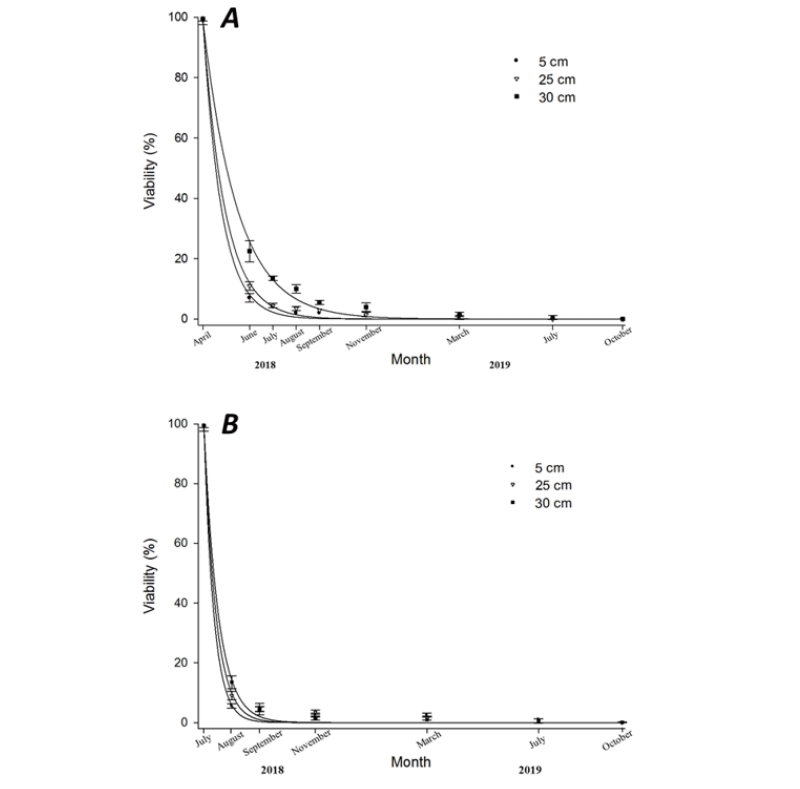Abstract
Estimation of seed persistence, viability and identification of emergence of canola seeds by depth of burial in the soil were the main purposes of this study. One hundred canola seeds were buried at 5, 25, and 30 cm depth of the soil in April and July 2018 at the confined field trials of Chungnam National University, Daejeon, South Korea. Eight removal dates were replicated three times. Burial seeds were exhumed and then intact seeds were tested for germination at monthly intervals. The viability of non-germinated intact seeds was determined by tetrazolium test. The seeds, which were buried at 30 cm depth, could persist longer than the seeds had been buried at 5 and 25 cm. As seeds were buried longer period, intact and dormant seeds were less and deteriorated seeds were more. With regard to emergence of canola, seeds were seeded at different depth of soil and recorded its emergence rate 21 and 28 days after seeding under glasshouse and field conditions respectively. The greatest number was observed when seeds were at 1 cm depth. Seeds did not emerge beyond 13 and 11 cm depth of soil under glasshouse and field conditions respectively. The results of this study will also be useful for future studies of biology and ecology of transgenic canola. However, the persistence of viable canola seeds in Korea is barely understood and further research is needed.
Figures & Tables

Fig. 1. Exponential decay curves of viability of canola on each time interval from April (A) and July (B) 2018.


